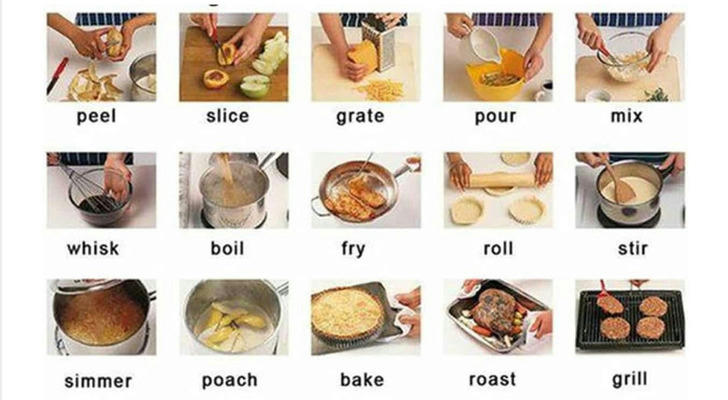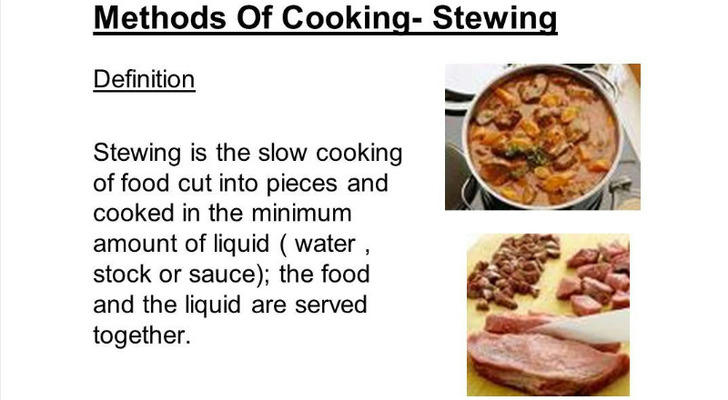The Science Behind Flavor: Exploring the Art and Chemistry of Cooking

Food is a universal language, transcending borders and cultures. Behind every delicious dish lies a fascinating interplay of chemistry, physics, and biology. This article uncovers the hidden science that transforms raw ingredients into memorable meals, offering insights to elevate everyday cooking.
1. The Chemistry of Taste and Aroma
Flavor is not just about taste; it's a multisensory experience. When we eat, taste buds detect five primary sensations: sweet, salty, sour, bitter, and umami. However, aroma contributes up to 80% of perceived flavor, as volatile compounds travel from food to olfactory receptors.
Key Concepts:
Maillard Reaction: This chemical reaction between amino acids and reducing sugars creates complex flavors in seared meats, roasted coffee, and baked bread. It occurs at temperatures above 140°C (284°F), producing hundreds of aromatic compounds.
Emulsification: Molecules like lecithin in egg yolks stabilize mixtures of oil and water, essential for sauces like mayonnaise or hollandaise.
Acid-Balance: Acids (e.g., citrus, vinegar) brighten dishes by balancing richness and enhancing other flavors.
Practical Tip: To deepen flavors in soups or stews, caramelize onions or tomatoes before adding liquids—this maximizes Maillard-driven complexity.
Expanded Insight:
Recent studies reveal that synergy between ingredients amplifies flavor. For example, combining tomatoes and garlic releases sulfur compounds that enhance umami perception. Similarly, pairing chocolate with coffee intensifies bitterness in a pleasing way. Understanding these interactions allows cooks to layer flavors intentionally.
2. Heat and Transformation: The Physics of Cooking
Heat transfer methods—conduction, convection, and radiation—dictate texture and doneness. Understanding these principles helps avoid overcooking or uneven results.
Methods Demystified:
Slow Cooking: Low temperatures (75–95°C / 167–203°F) break down collagen in tough cuts of meat into gelatin, yielding tender results.
Sous-Vide: Precise temperature control in water baths ensures proteins cook evenly, retaining moisture.
High-Heat Techniques: Grilling or stir-frying creates a crispy exterior while preserving interior juiciness.
Case Study: A steak seared on a cast-iron pan develops a flavorful crust (via conduction), while resting allows residual heat (carryover cooking) to evenly distribute juices.

Expanded Insight:
Moisture management is critical. For instance, roasting vegetables at 200°C (392°F) evaporates water, concentrating sugars and creating caramelization. Conversely, steaming retains water-soluble vitamins like B and C. Choosing the right method depends on the ingredient's structure: dense root vegetables benefit from dry heat, while delicate fish thrives in gentle poaching.
3. The Biology of Fermentation and Preservation
Fermentation harnesses microorganisms to enhance flavor, nutrition, and shelf life. From sourdough bread to kimchi, this ancient practice remains vital in modern kitchens.
Microbial Magic:
Lactic Acid Bacteria: Convert sugars into lactic acid, preserving vegetables (e.g., sauerkraut) and creating tangy yogurt.
Yeast: Feeds on carbohydrates to produce carbon dioxide and alcohol, leavening bread and fermenting beer.
Koji Mold: Used in soy sauce and miso, it breaks down starches and proteins into savory compounds.
Health Angle: Fermented foods contain probiotics that support gut health, linking culinary traditions to wellness.
Expanded Insight:
Controlled spoilage is the essence of fermentation. For homemade sauerkraut, salinity (2–3% salt by weight) inhibits harmful bacteria while allowing lactobacilli to thrive. Temperature also plays a role: kimchi ferments faster in warm climates, developing sharper acidity. Modern chefs experiment with koji beyond traditional uses, such as aging meats or enhancing nutty flavors in vegan cheeses.
4. The Psychology of Flavor Perception
Our brains interpret flavor through context, memory, and environment. Studies show that plating aesthetics, music, and even utensil weight influence taste perception.
Surprising Findings:
Color Contrast: Brightly colored vegetables are perceived as fresher and more flavorful.
Soundscapes: Crispy foods taste crunchier when accompanied by high-frequency sounds.
Texture Variety: Combining creamy, crunchy, and chewy elements in a dish enhances satisfaction.
Application: Elevate home meals by pairing dishes with complementary music or arranging ingredients thoughtfully on plates.
Expanded Insight:
Cross-modal perception explains why we associate round shapes with sweetness and angular shapes with bitterness. Restaurants leverage this by designing plates with curved edges for desserts. Similarly, serving chocolate mousse in a rough-textured bowl may amplify its richness through tactile contrast.
5. Sustainable Cooking: Science Meets Ethics
Modern culinary science addresses food waste and resource efficiency. Techniques like root-to-stem cooking and precision seasoning reduce environmental impact without sacrificing taste.
Innovations:
Upcycling: Vegetable peels become broths; stale bread transforms into croutons or breadcrumbs.
Energy Efficiency: Pressure cookers reduce cooking time by 70%, conserving fuel.
Plant-Based Alternatives: Protein-rich legumes and algae mimic meat textures, appealing to diverse diets.
Global Impact: Adopting these practices at home supports broader efforts to combat food insecurity and climate change.

Expanded Insight:
Flavor-focused preservation extends ingredient usability. For example, dehydrating herbs at 40°C (104°F) retains essential oils better than sun-drying. Pickling with vinegar or fermenting with salt not only prevents spoilage but also creates new flavor dimensions. Even coffee grounds can be repurposed as a meat rub or garden compost, aligning sustainability with creativity.
6. The Role of Cultural Heritage in Culinary Science
Traditional cooking methods often align with scientific principles, refined over generations through trial and error.
Case Studies:
Japanese Dashi: Kombu seaweed's glutamates and bonito flakes' inosinate create an umami synergy, a phenomenon scientifically termed "taste potentiation."
Indian Tempering: Heating spices in oil (tadka) releases fat-soluble flavor compounds, enhancing bioavailability and aroma.
Mexican Nixtamalization: Soaking corn in alkaline solution improves nutrient absorption and texture, a process now known to free bound niacin.
Practical Takeaway: Studying traditional techniques can inspire modern kitchens. For instance, using a mortar and pestle to grind spices preserves volatile oils better than electric grinders, which generate heat and oxidize flavors.
A Final Thought
Cooking is both an art and a science. By understanding the principles behind flavor development, heat dynamics, and sustainable practices, anyone can create meals that delight the senses and nourish communities. Whether tweaking a family recipe or experimenting with new techniques, every kitchen becomes a laboratory for discovery.
